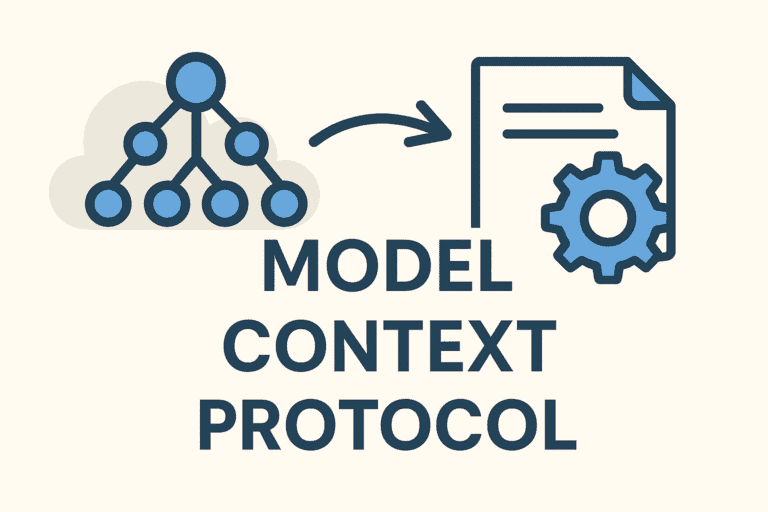The landscape of work has undergone a significant transformation in recent years, with the rise of remote work becoming more prevalent than ever before. This shift has been accelerated by technological advancements, changing attitudes toward work-life balance, and the global events that have reshaped the way we work. As remote work continues to gain momentum, organizations must adapt their management strategies to effectively lead distributed teams.
In a distributed team setup, where team members are geographically dispersed and often work remotely, effective management becomes paramount. Without the traditional face-to-face interactions of a co-located office, managers must find innovative ways to foster collaboration, maintain productivity, and ensure that team members feel connected and supported.
The purpose of this blog post is to provide practical tips and strategies for successfully managing remote teams. Whether you’re a seasoned manager navigating the challenges of remote work or a newcomer seeking guidance on how to lead a distributed team, these insights will help you effectively navigate the complexities of remote work management and set your team up for success.

Understanding the Challenges of Remote Work
Remote work offers many benefits, such as flexibility and autonomy, but it also presents unique challenges that managers must address to ensure the success of their distributed teams. Let’s delve into some of the key challenges faced by remote teams and discuss proactive management strategies to overcome them.
Highlighting the Unique Challenges
Communication Barriers: One of the most significant challenges of remote work is the potential for communication barriers to arise. Without the ability to have face-to-face interactions, misunderstandings can easily occur, leading to inefficiencies and frustrations. Additionally, reliance on written communication can sometimes lack the nuance and clarity of verbal communication.
Time Zone Differences: In a globally distributed team, time zone differences can pose a significant challenge. Coordinating meetings and collaboration can be difficult when team members are spread across different time zones, leading to delays in decision-making and project progress.
Feelings of Isolation: Remote work can often lead to feelings of isolation among team members, especially if they are accustomed to the social interactions of a traditional office environment. Without the camaraderie and spontaneous conversations that occur in an office setting, remote workers may feel disconnected from their colleagues and the organization as a whole.
Proactive Management Strategies
Prioritize Clear and Transparent Communication: To mitigate communication barriers, it’s essential to prioritize clear and transparent communication channels. Encourage your team to over-communicate and provide regular updates on project status, deadlines, and expectations. Utilize tools such as Slack, Microsoft Teams, or Zoom to facilitate real-time communication and video conferencing.
Establish Core Working Hours: While it may not be feasible to have all team members working the same hours due to time zone differences, consider establishing core working hours where all team members are expected to be available for collaboration and meetings. This can help create a sense of alignment and ensure that important discussions occur when everyone is present.
Promote Virtual Team Building and Social Interactions: Combat feelings of isolation by actively promoting virtual team-building activities and social interactions. Schedule virtual coffee breaks, team lunches, or fun activities like online trivia or virtual escape rooms to foster a sense of camaraderie and connection among team members.

Establishing Clear Communication Channels
Clear and consistent communication is the cornerstone of successful remote team management. Without the ability to have face-to-face interactions, it’s essential to establish effective communication channels to keep everyone aligned and informed. In this section, we’ll explore the importance of clear communication, recommend some popular communication tools, and discuss setting expectations for response times and availability.
Importance of Clear and Consistent Communication
- Alignment and Clarity: Clear communication ensures that all team members are on the same page regarding project goals, timelines, and expectations. It reduces the likelihood of misunderstandings and promotes alignment toward common objectives.
- Collaboration and Engagement: Effective communication fosters collaboration and engagement among remote team members. It encourages the sharing of ideas, feedback, and insights, leading to better decision-making and problem-solving.
- Building Trust and Relationships: Transparent communication helps build trust and strengthen relationships within the team. When team members feel informed and included, they are more likely to trust their colleagues and collaborate effectively.
Recommendations for Communication Tools
When it comes to selecting communication tools for your remote team, it’s essential to choose platforms that facilitate seamless collaboration and meet the unique needs of your team. Here are some popular communication tools to consider:
Slack: Slack is a versatile messaging platform that allows teams to communicate in real time through channels, direct messages, and group chats. It offers integrations with other productivity tools and customizable features to tailor the platform to your team’s preferences.
Zoom: Zoom is a video conferencing tool that enables teams to hold virtual meetings, webinars, and conference calls. It offers features such as screen sharing, virtual backgrounds, and breakout rooms, making it ideal for remote team collaboration and communication.
Microsoft Teams: Microsoft Teams is a comprehensive collaboration platform that combines chat, video conferencing, file sharing, and project management capabilities. It integrates seamlessly with other Microsoft Office applications and offers robust security features for enterprise use.
Setting Expectations for Response Times and Availability
To ensure smooth communication within your distributed team, it’s crucial to set clear expectations for response times and availability. Here are some tips for establishing communication norms:
Define Communication Hours: Encourage team members to establish core working hours when they will be available for communication and collaboration. This helps create predictability and ensures that everyone knows when to expect responses.
Communicate Preferred Channels: Communicate the preferred communication channels for different types of messages. For urgent matters, encourage team members to use instant messaging or phone calls, while non-urgent communications can be sent via email or project management tools.
Respect Time Zones: Be mindful of time zone differences when scheduling meetings and sending messages. Use tools like World Time Buddy to find suitable meeting times that accommodate all team members’ schedules.

Cultivating Trust and Accountability
In a distributed team setup, cultivating trust and accountability is essential for fostering a positive work environment and ensuring the success of remote teams. In this section, we’ll explore strategies for building trust among team members, implementing accountability measures to maintain productivity, and encouraging autonomy while upholding accountability standards.
Building Trust Among Team Members
Open and Transparent Communication: Foster trust among team members by promoting open and transparent communication. Encourage honesty, authenticity, and vulnerability in discussions, and provide opportunities for team members to share their thoughts, ideas, and concerns.
Lead by Example: As a manager, lead by example and demonstrate trustworthiness in your actions and decisions. Be reliable, consistent, and supportive, and show empathy and understanding towards your team members’ needs and challenges.
Promote Collaboration and Teamwork: Encourage collaboration and teamwork within your distributed team by providing opportunities for shared decision-making, brainstorming, and problem-solving. Recognize and celebrate team achievements to reinforce a sense of camaraderie and mutual respect.
Implementing Accountability Measures
Set Clear Expectations and Goals: Define clear expectations and goals for individual team members and the team as a whole. Communicate these expectations regularly and ensure that everyone understands their roles, responsibilities, and priorities.
Establish Key Performance Indicators (KPIs): Implement measurable KPIs to track progress and performance. Set SMART (Specific, Measurable, Achievable, Relevant, Time-bound) goals and regularly review them to assess performance and provide feedback.
Utilize Project Management Tools: Leverage project management tools such as Asana, Trello, or Jira to assign tasks, track progress, and monitor deadlines. These tools provide visibility into project status and facilitate accountability by enabling team members to track their progress and collaborate effectively.
Encouraging Autonomy While Maintaining Accountability
Empowerment and Decision-Making: Encourage autonomy and empower team members to take ownership of their work. Provide opportunities for decision-making and problem-solving, and trust your team members to deliver results independently.
Regular Check-ins and Feedback: Schedule regular check-ins with team members to provide support, guidance, and feedback. Use these meetings to discuss progress, address challenges, and celebrate achievements, while also holding team members accountable for meeting their commitments.
Establish a Culture of Accountability: Foster a culture of accountability within your distributed team by promoting accountability as a core value. Encourage peer accountability and support team members in holding each other accountable for their actions and contributions.

Fostering Team Collaboration
Collaboration is the heartbeat of any successful team, and it’s especially crucial in a distributed work environment where team members are geographically dispersed. In this section, we’ll explore strategies for promoting collaboration among remote team members, leveraging project management tools to streamline workflows, and encouraging virtual team-building activities and social interactions.
Strategies for Promoting Collaboration
Establish Clear Communication Channels: Create dedicated channels or platforms for team communication, such as Slack or Microsoft Teams. Encourage team members to share updates, ask questions, and collaborate on projects in these centralized spaces.
Regular Virtual Meetings: Schedule regular virtual meetings to facilitate face-to-face interactions and discussions. Use video conferencing tools like Zoom or Google Meet to hold team meetings, brainstorming sessions, and project check-ins.
Encourage Cross-Functional Collaboration: Foster collaboration across different departments or teams by encouraging cross-functional projects and initiatives. Break down silos and promote knowledge sharing by facilitating collaboration between team members with diverse skill sets and expertise.
Utilizing Project Management Tools
Corexta: Corexta is the ultimate project management companion. Corexta empowers teams to streamline tasks, track progress, and improve collaboration easily. With Corexta, create project timelines, delegate tasks smoothly, and stay ahead of deadlines with ease. Corexta create a chance to boost productivity and achieve project success.
Asana: Asana is a versatile project management tool that allows teams to organize tasks, track progress, and collaborate effectively. Use Asana to create project timelines, assign tasks to team members, and monitor deadlines to ensure projects stay on track.
Trello: Trello is a visual collaboration tool that uses boards, lists, and cards to organize tasks and projects. Utilize Trello boards to create workflows, prioritize tasks, and track progress in real time, making it easy for remote team members to stay aligned and coordinated.
Jira: Jira is a robust project management tool designed for software development teams. Use Jira to plan, track, and release software projects, manage sprints and backlogs, and collaborate with remote team members on code reviews and issue tracking.
Encouraging Virtual Team-Building Activities
Virtual Coffee Breaks: Schedule informal virtual coffee breaks or “water cooler” chats to encourage casual conversations and social interactions among team members. Use this time to catch up, share personal updates, and strengthen team bonds.
Online Games and Activities: Organize virtual games or team-building activities, such as online trivia, virtual escape rooms, or remote team-building challenges. These activities promote camaraderie and teamwork while providing a fun and engaging break from work.
Virtual Team Lunches or Happy Hours: Plan virtual team lunches or happy hours where team members can gather over video conferencing for a shared meal or social event. Encourage conversation, laughter, and connection to foster a sense of belonging and community within the team.

Managing Time Zones Effectively
Managing time zones effectively is crucial for ensuring smooth collaboration and communication within a globally distributed team. In this section, we’ll explore tips for navigating time zone differences, establishing core working hours to accommodate team overlap, and using scheduling tools to coordinate meetings and deadlines across different time zones.
Tips for Navigating Time Zone Differences
- Acknowledge and Respect Time Zone Variations: Recognize that team members may be located in different time zones, and be mindful of the potential impact on scheduling and communication. Acknowledge and respect these time zone variations when planning meetings and setting deadlines.
- Establish Communication Norms: Establish clear communication norms and expectations regarding response times and availability across different time zones. Encourage team members to communicate their working hours and availability upfront to facilitate coordination and collaboration.
- Be Flexible and Adaptive: Embrace flexibility and adaptability when scheduling meetings and assigning tasks. Be willing to accommodate different time zones and find creative solutions to ensure that all team members have the opportunity to participate and contribute.
Establishing Core Working Hours
Define Core Working Hours: Establish core working hours during which all team members are expected to be available for collaboration and communication. Identify overlapping hours when the majority of team members are online to facilitate real-time interaction and decision-making.
Balance Flexibility and Consistency: Balance flexibility with consistency when defining core working hours. While it’s essential to accommodate individual preferences and schedules, strive to establish consistent times for team meetings and collaboration to maintain a sense of structure and routine.
Respect Work-Life Balance: Respect the work-life balance of team members and avoid scheduling meetings or tasks outside of core working hours whenever possible. Encourage a culture of mutual respect and understanding, where team members feel empowered to set boundaries and prioritize their well-being.
Using Scheduling Tools
Utilize Time Zone Converters: Use time zone converter tools such as World Time Buddy or Time Zone Converter to quickly and accurately convert meeting times and deadlines across different time zones. These tools make it easy to find suitable meeting times that accommodate the availability of all team members.
Schedule Meetings in Advance: Schedule meetings well in advance and provide ample notice to allow team members to plan accordingly. Consider rotating meeting times to ensure fairness and accessibility for all team members, especially those in different time zones.
Centralize Meeting Scheduling: Centralize meeting scheduling and coordination using scheduling tools like Google Calendar or Calendly. These tools allow team members to view each other’s availability, propose meeting times, and automatically adjust for time zone differences, streamlining the scheduling process.

Prioritizing Work-Life Balance
Maintaining a healthy work-life balance is essential for the well-being and productivity of remote team members. In this section, we’ll explore the importance of promoting work-life balance in a remote work environment, strategies for encouraging flexible work schedules and setting boundaries, and the importance of providing support for mental health and well-being.
Importance of Promoting Work-Life Balance
Enhanced Productivity and Engagement: Prioritizing work-life balance leads to increased productivity and engagement among remote team members. When employees feel rested and rejuvenated, they can approach their work with focus and enthusiasm, leading to better outcomes and performance.
Reduced Burnout and Stress: By promoting work-life balance, organizations can mitigate the risk of burnout and stress among remote workers. When employees are given the flexibility to balance their work responsibilities with personal commitments and self-care activities, they are less likely to experience feelings of overwhelm and exhaustion.
Improved Retention and Satisfaction: Cultivating a culture that values work-life balance can improve employee retention and satisfaction. Remote workers are more likely to stay with an organization that prioritizes their well-being and offers flexibility in how and when they work.
Encouraging Flexible Work Schedules and Setting Boundaries
Empowerment and Autonomy: Encourage remote team members to take ownership of their schedules and work patterns. Offer flexibility in work hours and allow employees to tailor their schedules to accommodate personal commitments and preferences.
Setting Clear Boundaries: Establish clear boundaries between work and personal life to prevent burnout and maintain well-being. Encourage team members to set designated workspaces and hours, and to communicate their availability to colleagues to avoid interruptions outside of working hours.
Lead by Example: As a manager, lead by example by demonstrating healthy work-life balance practices. Respect your team members’ boundaries and encourage them to take breaks, prioritize self-care, and disconnect from work when needed.
Providing Support for Mental Health and Well-being
Offering Resources and Support: Provide access to resources and support services that promote mental health and well-being, such as employee assistance programs, counseling services, or mindfulness workshops. Encourage team members to prioritize self-care and seek help when needed.
Regular Check-ins and Check-outs: Schedule regular check-ins with remote team members to gauge their well-being and offer support. Use these meetings as an opportunity to check in on workload, stress levels, and overall satisfaction, and provide guidance or resources as needed.
Promoting Work-Life Integration: Encourage a holistic approach to work-life balance by promoting work-life integration rather than strict separation. Emphasize the importance of pursuing hobbies, spending time with loved ones, and engaging in activities that promote overall well-being, both inside and outside of work.

Offering Ongoing Support and Feedback
Supporting and providing feedback to remote team members is essential for their growth, development, and overall success. In this section, we’ll explore strategies for offering ongoing support and feedback to remote employees, including regular performance evaluations, resources for professional development, and opportunities for open dialogue.
Providing Regular Feedback and Performance Evaluations
Scheduled Check-ins: Schedule regular one-on-one check-in meetings with remote team members to discuss their progress, performance, and any challenges they may be facing. Use these meetings as an opportunity to provide constructive feedback, acknowledge achievements, and set goals for the future.
360-Degree Feedback: Encourage a culture of feedback by soliciting input from peers, colleagues, and other stakeholders through 360-degree feedback assessments. This multi-dimensional approach to feedback provides valuable insights and perspectives for employee growth and development.
Performance Reviews: Conduct formal performance reviews on a regular basis to assess remote team members’ performance against established goals and expectations. Provide specific, actionable feedback and identify areas for improvement, as well as opportunities for growth and development.
Offering Resources and Support for Professional Development
- Training and Development Programs: Offer training and development programs to support remote team members in acquiring new skills and advancing their careers. Provide access to online courses, workshops, and seminars relevant to their roles and career aspirations.
- Mentorship and Coaching: Pair remote employees with mentors or coaches who can provide guidance, support, and advice on career development and professional growth. Foster a culture of mentorship and encourage knowledge sharing and learning from experienced team members.
- Tuition Reimbursement: Consider offering tuition reimbursement or financial assistance for remote team members pursuing further education or certifications related to their roles. Investing in their professional development demonstrates your commitment to their growth and success.
Creating Opportunities for Open Dialogue and Addressing Concerns
Open-Door Policy: Maintain an open-door policy and encourage remote team members to voice their concerns, ideas, and suggestions openly. Create a safe and supportive environment where employees feel comfortable sharing their thoughts and feedback without fear of judgment or reprisal.
Anonymous Feedback Mechanisms: Implement anonymous feedback mechanisms, such as surveys or suggestion boxes, to allow remote team members to provide feedback confidentially. Use this feedback to identify trends, address common concerns, and make improvements to the work environment.
Regular Team Meetings and Town Halls: Schedule regular team meetings and town halls to facilitate open dialogue and communication among remote team members. Use these forums to share updates, address concerns, and solicit input on important decisions affecting the team.
Conclusion
Effectively managing a distributed team requires a combination of clear communication, trust-building, and ongoing support and feedback. By prioritizing work-life balance, fostering collaboration, and providing resources for professional development, managers can create a positive and productive remote work environment. Remember to offer regular feedback, support employee growth, and create opportunities for open dialogue to ensure the success of your distributed team. Embrace the challenges and opportunities of remote work, and continue to adapt and evolve your management strategies to meet the needs of your team in an ever-changing landscape.










